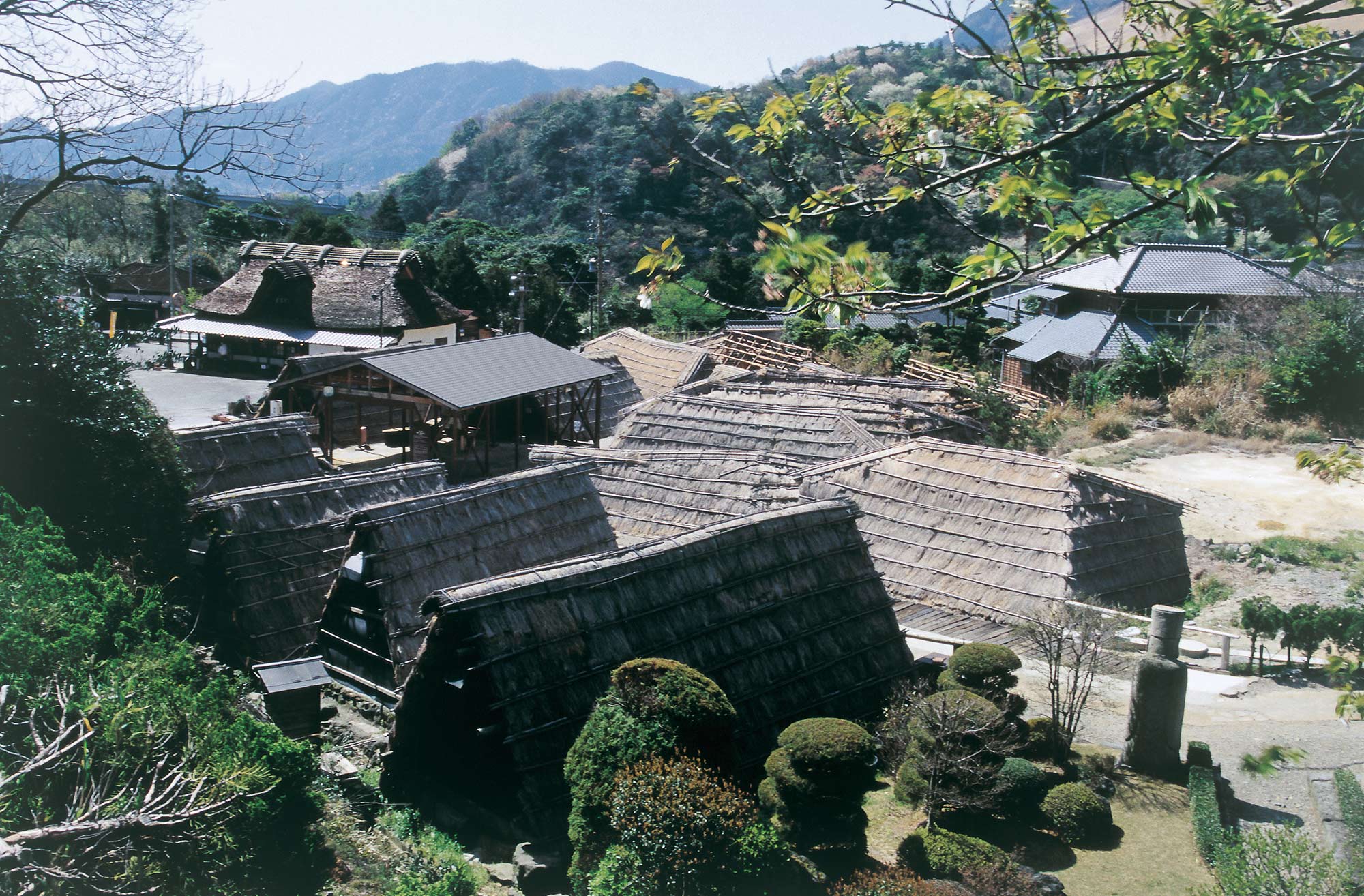

- Beppu & Yufu
- Hot Springs
Myouban Hot Springs Yu-no-Hana (Mineral Deposit) Huts
Photography/ISHIMATSU Takeo
Thriving Traditional Technique
Take National Route 500 from the city of Beppu to Jumonjibaru, pass under the expressway overpass, and a strong scent will come wafting your way. This is one of the eight famous hot springs of Beppu and the most secluded, Myouban Hot Spring.
The scent comes from the Yu-no-Hana Huts. Steam rises from triangular-roofed straw huts reminiscent of ancient dwellings lining either side of the road.
“Yu-no-Hana” (hot spring mineral deposits) is a specialty of Beppu, letting you experience the feeling of hot springs at home just by putting them in the bath. These huts are used to collect these mineral deposits.
In the Myouban Hot Spring area, hot springs course just a few centimeters below ground, with sulfurized gas erupting from cracks in the earth’s surface. This is piped into the bottom of the huts. Pebbles are packed on top of this, then covered with a blue clay about ten centimeters thick. The steam passing through these layers reacts with the iron and aluminum in the clay, creating columns of crystals on the surface.
This is aluminum sulfate and iron sulfate, that is, Yu-no-Hana. Crystals grow by only about one millimeter a day. After about 40 days of growth, the crystals are collected, purified, and dried, then turned into a product. Huts with steep slopes and a variety of tricks to keep the temperature constant within the hut were built not only to improve quality, but to prevent these crystals from dissolving in the rain. This technology created through ancient tradition was designated as a Nationally Designated Important Intangible Folk Cultural Property in 2006 by the nation.
The hot spring contains sulfur and alum, and gushes up in large amounts. It is thought to have started being used as a hot spring area since the beginning of the Meiji period. However, the presence of alum has been known since the Edo period, and was the largest producer of alum in the country, collected under the name of Okoshi alum or Kurushima alum because this land was divided between Shogunate territory and Kurushima enclaves. The Yu-no-Hana Huts today are the result of the passing down and improvement of this technology.
There are many hot spring resorts, and many tourists and spa treatment participants dressed in yukatas can be seen peeking into the huts. The “Hell Steamer” has been built to steam eggs and pudding with the gas, and these have become specialties alongside the Yu-no-Hana.

A soft-boiled egg made with the Hell Steamer, a specialty on par with Yu-no-Hana mineral deposits.

